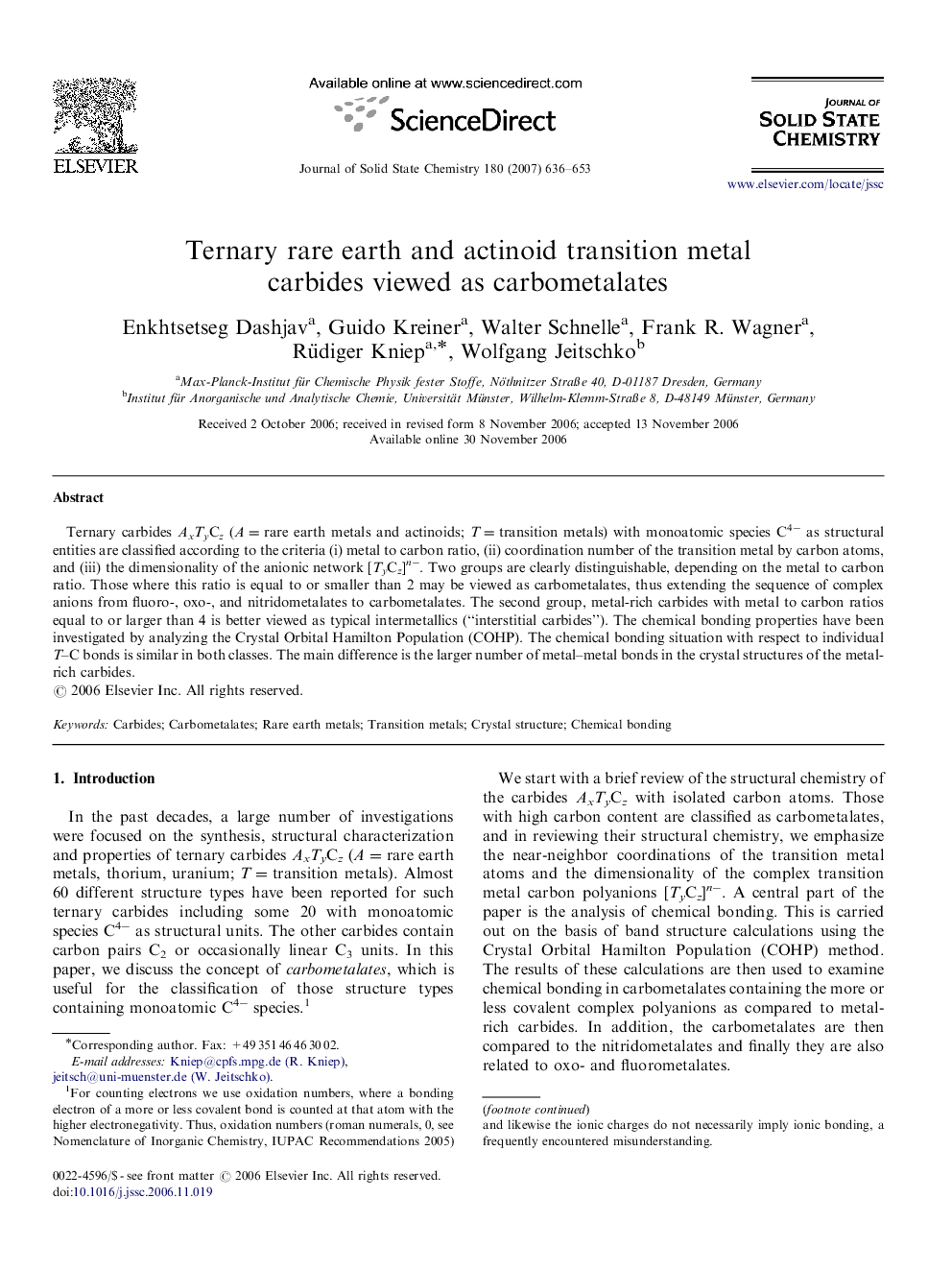| Article ID | Journal | Published Year | Pages | File Type |
|---|---|---|---|---|
| 1333430 | Journal of Solid State Chemistry | 2007 | 18 Pages |
Ternary carbides AxTyCz (A=rare earth metals and actinoids; T=transition metals) with monoatomic species C4− as structural entities are classified according to the criteria (i) metal to carbon ratio, (ii) coordination number of the transition metal by carbon atoms, and (iii) the dimensionality of the anionic network [TyCz]n−. Two groups are clearly distinguishable, depending on the metal to carbon ratio. Those where this ratio is equal to or smaller than 2 may be viewed as carbometalates, thus extending the sequence of complex anions from fluoro-, oxo-, and nitridometalates to carbometalates. The second group, metal-rich carbides with metal to carbon ratios equal to or larger than 4 is better viewed as typical intermetallics (“interstitial carbides”). The chemical bonding properties have been investigated by analyzing the Crystal Orbital Hamilton Population (COHP). The chemical bonding situation with respect to individual T–C bonds is similar in both classes. The main difference is the larger number of metal–metal bonds in the crystal structures of the metal-rich carbides.
Graphical abstractCarbometalates represent a specific class of ternary carbides whose crystal structures contain complex anions, e.g., (a) discrete complex anion [NiC2]8– in the crystal structure of Th2NiC2, (b) ∞1[(CoC)3–] linear chain in the crystal structure of YCoC, (c) ∞1[(ReC2)6–] zigzag chain in Pr2ReC2.Figure optionsDownload full-size imageDownload as PowerPoint slide
